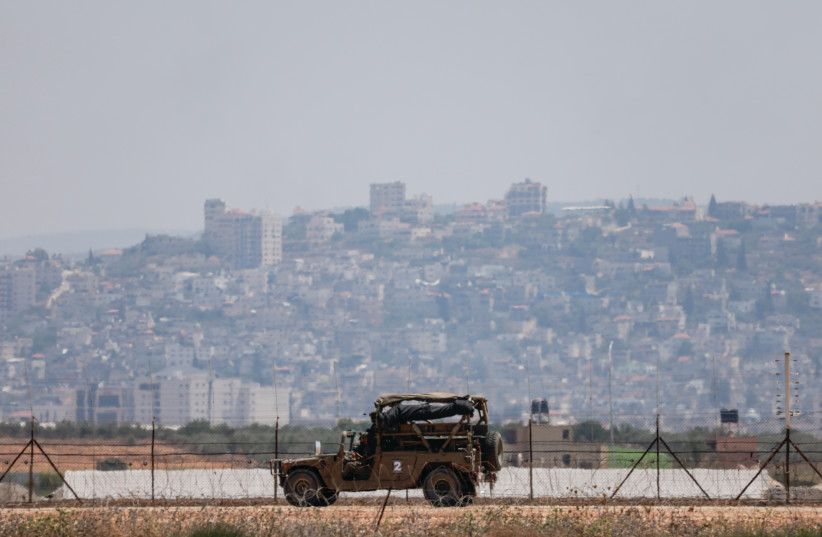The IDF and the Shin Bet (Israel Security Agency) conducted a minor escalation against West Bank terror overnight between Sunday and Monday, arresting 17 Palestinians in one night of raids, including using somewhat larger forces and one raid which lasted an unusual five hours long.
The number of arrests, altercations, size of IDF forces, and amount of time the forces spent in some of the Palestinian areas was more extensive than the average nightly IDF raid.
However, the Jerusalem Post has learned that the IDF did not view the raid as a "mini-Jenin" operation or a warm up to such an operation. This, despite the fact that many top officials announced that, after the massive two-day operation in Jenin earlier in July, other similar massive operations might soon be necessary.
Although the IDF acted throughout the northern, middle, and southern Palestinian areas, one of the larger West Bank raids, of the multiple ones which the IDF undertook overnight, was at Nur-al-Shams in the northeastern West Bank, close to Tulkarm.
Jenin is about 50 kilometers further northwest of Tulkarm and Nur-al-Shams. However, the Post understands that aspects of the terror emanating from Tulkarm and Nur-al-Shams could be viewed as being directed, or at least inspired, by terror sponsors in Jenin.

One way to view the raids Sunday night-Monday morning was as a lower-level continuation of mopping up the terror which had been coming out of Jenin.
In that sense, the most significant item might be the number of arrests, which the IDF would attribute to extremely accurate intelligence in locating suspects, even more accurate than during some other raids.
In fact, the vast majority of the suspects being sought were exactly where they were expected to be this time, something which is not always true, given that many terror suspects change their location on an ongoing basis.
IDF switching tactics
The IDF would acknowledge that the raids were less of a "surgical strike" than others. This reflects a strategy of throwing a larger net over suspects being sought.
For now, the majority view in the IDF is to maintain nightly raids where necessary, but also to create space for the Palestinian Authority to reassert control. The PA is now taking some actions along those lines in Jenin.
An IDF statement said that 10 explosive devices were seized in addition to the arrests, with many arrestees providing useful intelligence information regarding terror cells and trends going forward.
Arrests were also made in Beitut, Misakan Shaabiyah, Beit Kahil, Dura, el-Moir, Katanah and Tapuach. There were also operations in Beit Omar and Bethlehem.
In Nur-al-Shams, Beitut, and Katanah, local Palestinians responded to the IDF operations with a mix of gunfire, tossing improvised explosives, and stone-throwing.
With regard to Aqvat Jabar, the IDF was able to use crowd dispersal means to repel local Palestinian resistance.
Regarding Nur-al-Shams, the IDF noted that some Palestinians were hurt when it returned fire. In some of the other exchanges of gunfire, the IDF fired more in the air as a warning.
